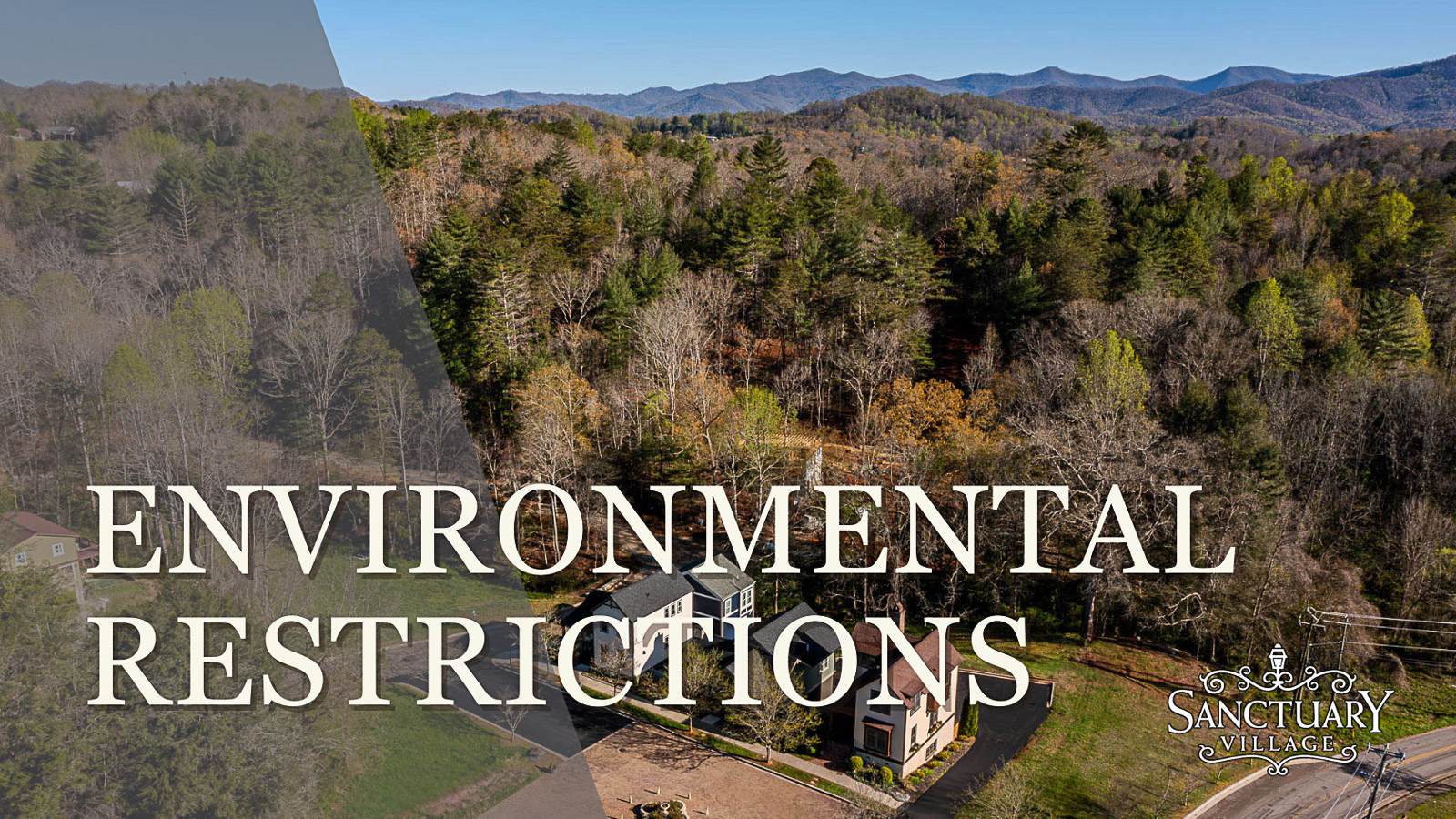When purchasing and developing a homesite at Sanctuary Village, it is essential to understand and comply with environmental restrictions. These regulations are designed to protect the natural environment and ensure sustainable development. Here’s a comprehensive guide to the environmental restrictions you might encounter and how they can impact your property development plans.
Understanding Environmental Restrictions
Purpose of Environmental Restrictions:
Conservation: These restrictions aim to preserve natural habitats, protect wildlife, and maintain the ecological balance of the area.
Sustainable Development: Ensuring that development projects do not harm the environment, these regulations promote the responsible use of natural resources and encourage sustainable building practices.
Types of Environmental Restrictions
Wetland Protection:
Definition: Wetlands are protected areas that support diverse ecosystems. Development in or near wetlands is highly regulated to prevent ecological damage.
Permits Required: If your homesite includes or is adjacent to a wetland, you may need special permits from environmental agencies. Activities such as drainage, filling, or building on wetlands often require detailed environmental assessments and mitigation plans.
Floodplain Regulations:
Flood Risk Management: Properties located in designated floodplains must comply with specific building codes and regulations to manage flood risks. This includes elevating structures, using flood-resistant materials, and ensuring proper drainage.
Insurance Requirements: Homes in floodplains may require flood insurance, which can impact your overall costs.
Wildlife Conservation:
Protected Species: If your homesite is home to or near habitats of protected species, there may be restrictions on development activities. These regulations aim to protect endangered or threatened wildlife and their habitats.
Habitat Conservation Plans: You might need to develop and implement a Habitat Conservation Plan (HCP) to mitigate the impact of construction on local wildlife.
Tree Preservation:
Local Ordinances: Many municipalities have tree preservation ordinances that protect significant trees or require permits for their removal. These laws help maintain the aesthetic and environmental quality of the area.
Replanting Requirements: If tree removal is necessary, you may be required to plant new trees or pay into a tree replacement fund.
Compliance and Mitigation
Conduct Environmental Assessments:
Environmental Impact Studies: Before starting any development, conduct thorough environmental impact studies to identify potential issues and ensure compliance with all regulations.
Soil and Water Testing: Perform soil and water tests to detect any contamination or environmental hazards that need to be addressed before construction.
Obtain Necessary Permits:
Local and Federal Permits: Secure all required permits from local, state, and federal agencies. This includes building permits, environmental permits, and any special use permits needed for your specific site.
Compliance Documentation: Keep detailed records of all permits and compliance measures taken to protect the environment. This documentation can be crucial if regulatory agencies request proof of compliance.
Implement Mitigation Strategies:
Erosion Control: Use best practices for erosion control, such as silt fences, sediment traps, and vegetation buffers, to prevent soil erosion during and after construction.
Stormwater Management: Develop a stormwater management plan to control runoff, reduce flooding risks, and protect water quality. This may include installing retention ponds, permeable pavements, and rain gardens.
Habitat Restoration: If development impacts local habitats, implement habitat restoration projects to compensate for any ecological disruption. This can include planting native vegetation, creating wildlife corridors, and restoring wetlands.
Long-Term Environmental Stewardship
Sustainable Building Practices:
Green Building Materials: Use environmentally friendly building materials and sustainable construction methods to minimize the ecological footprint of your home.
Energy Efficiency: Incorporate energy-efficient systems and appliances to reduce energy consumption and promote sustainable living.
Community Involvement:
Engage with Local Environmental Groups: Participate in local environmental initiatives and collaborate with community groups to support conservation efforts.
Ongoing Compliance: Regularly review and update your environmental compliance measures to ensure ongoing adherence to regulations and promote a healthy environment.
Conclusion
Understanding and complying with environmental restrictions is crucial when developing a homesite at Sanctuary Village. By conducting thorough environmental assessments, obtaining necessary permits, and implementing effective mitigation strategies, you can ensure that your development project is sustainable and environmentally responsible. For more detailed guidance on navigating environmental regulations, visit our Buying Guide. Start your journey towards building an eco-friendly home in Sanctuary Village with confidence and clarity.
Explore Available Homesites
For those interested in exploring more options, Sanctuary Village has several homesites, each with its own unique charm and advantages. Browse our other properties to find the perfect fit for your needs and preferences.
Schedule Your Tour of Our Available Homesites
Our homesites are not just pieces of land; they are the foundation for future homes and a lifetime of memories. To truly appreciate the potential of this exceptional lot, we invite you to view its listing and schedule a tour. Experience firsthand the beauty of Parkside Lane, the serene surroundings, and the welcoming community vibe of Sanctuary Village. Contact us today to arrange your visit and take the first step in becoming a part of our community.

